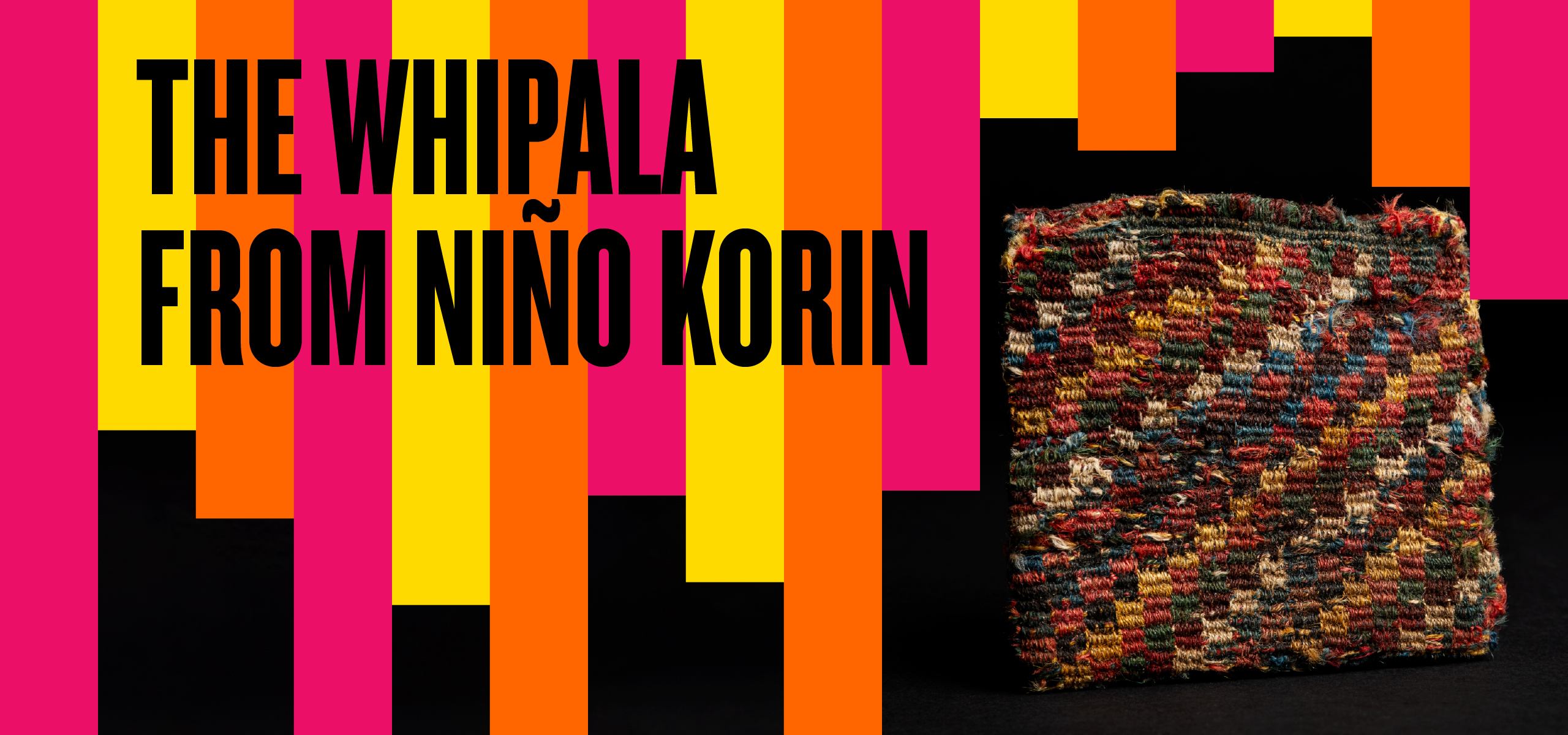

Inventory number: 1970.19.0022
Year made: 600-1000 A.D.
Origin: Bolivia
As the key object of the National Museums of World Culture, we have chosen a small pouch with a whipala pattern from the Kallawaya community in Bolivia. The whipala is a symbol of Indigenous peoples in the Andes, and this pouch is decorated with a diagonal checkered pattern in blue, yellow, reddish-brown, green, pink, white, and dark gray. The object is slightly smaller than a square decimeter. The small pouch was used to store coca leaves, which Kallawaya healers used in their work.
The Kallawaya are a community in northwestern Bolivia, primarily in Bautista Saavedra Province in the La Paz Department. They are known for their holistic medicine, which intertwines botany with ritual and spirituality. The Kallawaya healing tradition has roots in Andean practices and has been preserved through oral transmission from generation to generation, with documented practices dating back to the Inca period. For centuries, Kallawaya healers traveled through the Andes and the Amazon, treating illnesses such as malaria. Since 2003, the tradition has been recognized by UNESCO as part of the intangible cultural heritage of humanity, particularly for its extensive knowledge of healing practices and medicinal plants.
The small pouch with a whipala pattern, along with around eighty other objects, was looted in 1970 during grave robberies at Niño Korin near Villa Pérez-Charasani. The objects were then sold to the museum in Gothenburg for 1,000 USD. That same year, they arrived in Sweden and Gothenburg through Henry Wassén (1908–1996), who was then the director of the Gothenburg Museum of Ethnography.
In the early 1970s, Wassén conducted some research on the collection, including C14 dating. This allowed the objects to be dated to the Tiwanaku period, around 600–1000 CE. Coca leaves were found in the small pouch, and among the other objects were instruments associated with the medical practices of Kallawaya healers.
In 2006, following a repatriation request from Bolivia, a research project funded by the Swedish Arts Council (Kulturrådet) was initiated. Several individuals were invited to Gothenburg, including Walter Quispe, a leading Kallawaya healer; Carmen Beatriz Loza, a professor of history and expert on intangible cultural heritage; and decolonial studies scholar Walter Mignolo. During this visit, the object was reinterpreted. What had previously been cataloged as a “bag” was identified as a whipala, a type of flag with strong symbolic value.
Using decolonial perspectives involves questioning established categories and museum classifications. The meaning of objects changes depending on context and perspective—a pouch can also be a whipala. Today, the object raises questions about cultural identity and historical heritage. It is linked both to discussions about Indigenous rights in Bolivia and to the Andean diaspora in Sweden and Gothenburg. By highlighting objects like this, the National Museums of World Culture aim to make visible the colonial legacy and its consequences.
During the Hammarkulle Carnival in Gothenburg, the whipala is used in parade and cultural events where Andean groups express their identity through music, dance, and symbolic elements. Objects such as this whipala are part of a living cultural heritage that extends beyond the museum’s storage and academic discussions. They continue to be part of people’s everyday lives, political struggles, and community life.